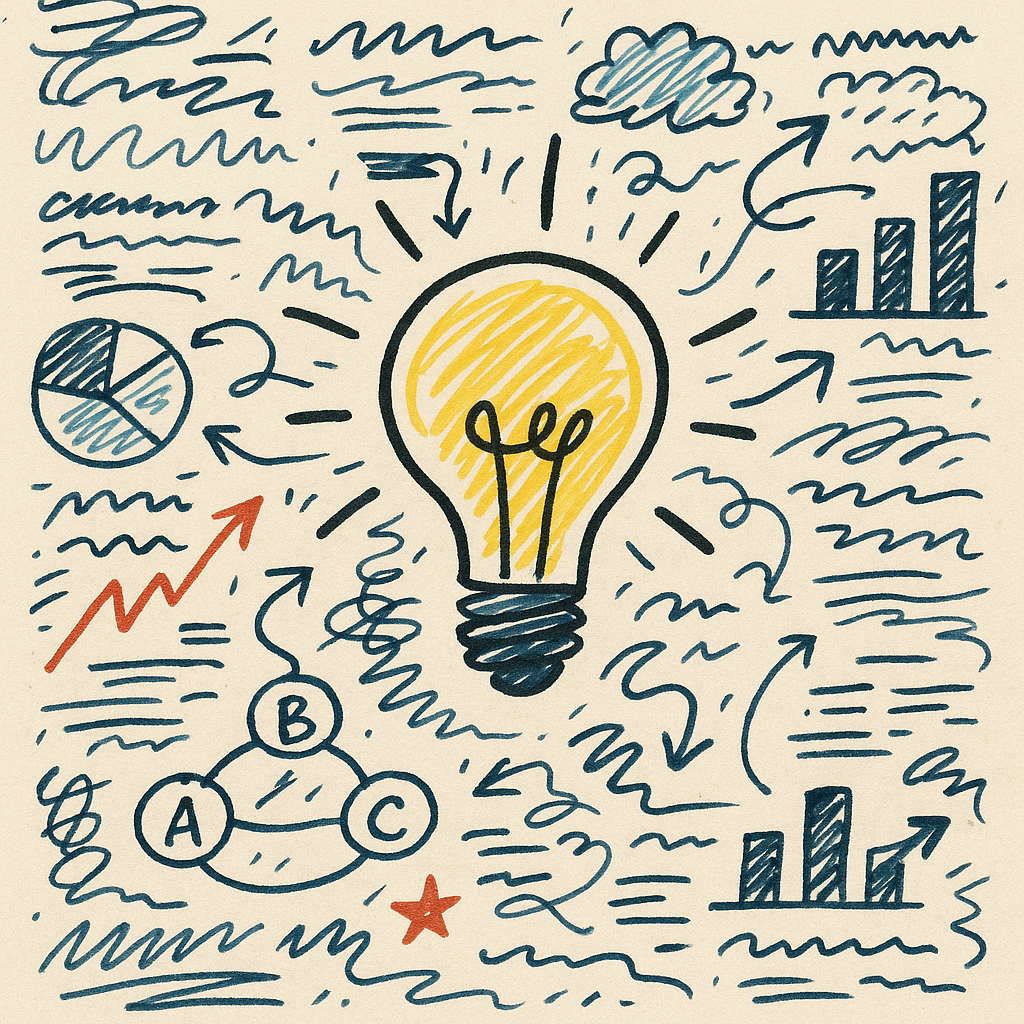Ever looked at a page of disorganized scribbles and thought it was useless? Think again. A growing number of productivity experts and neuroscientists now agree: messy notes improve productivity more than you might expect. What seems like chaos at first can actually foster sharper thinking, deeper learning, and stronger creativity.

The Myth of Perfect Notes
In a world obsessed with aesthetic bullet journals and meticulously organized digital files, the idea of taking messy, chaotic notes feels counterintuitive. But the truth is, when your brain is in active mode—processing, brainstorming, or absorbing—structured chaos may be exactly what it needs.
According to Dr. Barbara Oakley, author of A Mind for Numbers, engaging in less-structured note-taking encourages the brain to explore concepts freely without the limitations of linear thinking (Oakley 2014). This messy input phase allows ideas to marinate and evolve, which is crucial for insight.
Cognitive Science Backs the Mess
Research supports the idea that non-linear note-taking, including doodles, arrows, half-sentences, and mind maps, can improve information retention. This technique engages both hemispheres of the brain, creating a more immersive and memorable learning experience (Mangen and Velay 2010).
Moreover, the concept of “desirable difficulties” in learning—proposed by Dr. Robert Bjork of UCLA—suggests that struggling slightly to recall and reorganize disorganized notes actually deepens long-term retention (Bjork and Bjork 2011). In other words, messy notes improve productivity by making your brain work a little harder—and smarter.
The Rise of Visual Note-Taking and Sketchnotes
Visual note-taking, or “sketchnoting,” has become a movement. Tools like Notability, GoodNotes, and even iPad-compatible styluses are designed to allow freedom of expression over strict formatting. This method of drawing, connecting, and scrawling has been widely adopted in fields like design thinking and UX brainstorming.
Educator and visual note-taking expert Mike Rohde argues that this form of notetaking enhances attention and recall by integrating imagery, structure, and keywords into a personalized learning language (Rohde 2013). It may look chaotic, but it speaks volumes to your brain.
The Two-Phase Note System
Experts recommend treating note-taking as a two-phase process:
- Capture Mode: This is the raw phase. Scribble, draw, mind-map, and jot ideas down as they come.
- Clarify Mode: After a break, return to your notes. Organize and synthesize them. That’s when the structure emerges.
Think of it like brainstorming before writing. The mess is part of the method.
Why Students and Professionals Are Adopting This Trend
With platforms like Roam Research, Obsidian, and Notion on the rise, people are embracing a new kind of digital chaos—connected but non-linear thought processing. These tools allow for bidirectional linking, random access of thoughts, and flexible categorization.
Students find this particularly effective in interdisciplinary courses where knowledge overlaps and needs to be synthesized. Professionals, especially in tech and creative industries, use these methods to brainstorm, write, and innovate.
Messy Notes Encourage Active Thinking
Clean, typed notes often become passive reading material. In contrast, messy notes—especially handwritten—require effort to decode and organize. That engagement sparks deeper understanding.
This is consistent with findings from Mueller and Oppenheimer’s Princeton-UCLA study, which concluded that students who handwrote their notes retained more and understood better than those who typed them verbatim (Mueller and Oppenheimer 2014).
Tips to Make Your Messy Notes Work
Ready to embrace the chaos? Here’s how to harness messy notes for productivity:
- Use Mixed Media: Combine pen and paper with digital tools like Evernote or Notion.
- Color Code Retroactively: Don’t slow down the flow by organizing during capture. Use colors when reviewing.
- Mind Maps Over Lists: Use visuals, arrows, and bubble maps to connect ideas non-linearly.
- Leave Margin Notes: Jot down second thoughts or questions in the margins to revisit later.
- Review in Intervals: Let the chaos settle. Revisit and reformat after a few hours or days.
Common Misconceptions About Note-Taking
- “I need to make it neat or it’s useless.” False. Neat notes may look better but don’t always work better.
- “Typing is faster and more efficient.” Not always. Speed isn’t comprehension.
- “I can’t understand my own messy notes.” That’s the point. Reviewing and rewriting clarifies your thinking.
Real-World Examples: From Tech CEOs to Students
- Jack Dorsey, co-founder of Twitter and Square, reportedly uses bullet-journal hybrids filled with diagrams and scribbles.
- Richard Branson, founder of Virgin Group, praises “scrawling in notebooks” for idea generation.
- Harvard University’s Learning Lab encourages students to personalize notes with diagrams and mind maps to enhance comprehension (Harvard 2020).
Conclusion
Messy notes aren’t a flaw—they’re a feature. They reflect the brain’s dynamic process of learning and creating. Instead of striving for picture-perfect notes, let your ideas flow, connect, and evolve organically. Later, when you revisit them, you’ll find deeper insights waiting beneath the scribbles.
Let go of the pressure to be neat. Start messy. Think clearer.
References
Spilker, J. (2025, February 15). The Case for “Messy” Note‑Taking. Medium.
https://medium.com/create-make-write/the-case-for-messy-note-taking-d60edf23a5da
Hu, C. (2024, February 21). Why Writing by Hand Is Better for Memory and Learning. Scientific American.
https://www.scientificamerican.com/article/why-writing-by-hand-is-better-for-memory-and-learning/
Huang, M. (2023, October 6). Concept mapping: A powerful tool for note-taking. University of Waterloo Student Success. https://uwaterloo.ca/student-success/blog/concept-mapping-powerful-tool-note-taking






